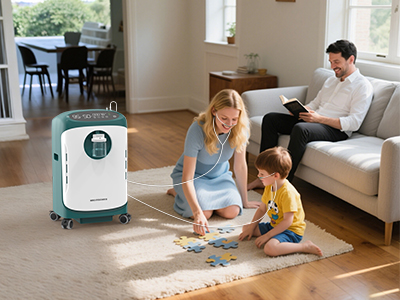11 Nov 2025
Managing oxygen therapy for one person is an adventure. Managing it for the whole family? That’s a full-blown expedition—complete with equipment choices, supply stockpiles, and financial strategy worthy of a NASA launch plan. But fear not. A bit of planning, a sprinkle of humor, and a dash of fiscal sorcery can turn oxygen therapy budgeting from a chaotic scramble into a well-orchestrated household routine.

Understanding Oxygen Needs for a Multigenerational Household
Not all lungs are created equal. In a household with diverse ages and medical needs, oxygen requirements can vary dramatically. Grandpa may need continuous flow. Mom might use a pulse-dose concentrator for exertion. And your teenager—who assured you they were invincible—may need occasional supplemental oxygen after a respiratory flare-up.
Recognizing these differences is the first step toward crafting a sane budget. Tailored therapy prevents overspending on unnecessary equipment and supplies. It also ensures everyone breathes comfortably—even the dramatic member of the family who claims they’re “fine” while wheezing like a haunted harmonica.
Equipment Costs: What to Expect and How to Plan
Oxygen concentrators come with price tags that can trigger involuntary eyebrow acrobatics. Stationary units range from modest to majestic, while portable models can flirt with the cost of a small vacation. Then there’s the recurring cast of characters: tubing, cannulas, humidifiers, filters, batteries, and that one accessory you swore you didn’t need until you did.
To budget wisely, categorize equipment into three groups: initial investments, recurring supplies, and optional upgrades. Plot them on a realistic timeline, and you’ll know exactly when your wallet needs to brace itself. This prevents impulsive, late-night purchases—because no one needs a third battery they’ll never use, no matter how persuasive the shopping cart chatbot was.
Insurance, Benefits, and the Art of Paperwork Persistence
Ah, insurance—the bureaucratic labyrinth where patience goes to be tested. But navigating benefits can save substantial amounts. Many plans cover oxygen equipment rentals, certain supplies, and maintenance. Others may subsidize portable concentrators if medically necessary.
Persistence is your greatest superpower here. Call, email, send smoke signals—whatever it takes to get clear answers. Keep copies of every document in a folder labeled something encouraging like “Oxygen Odyssey.” A well-organized approach can uncover hidden perks, reduce routine expenses, and prevent you from paying out of pocket for things your plan actually covers.
Energy Use: Understanding the Electric Bill Impact
Oxygen concentrators are wonderful, life-enhancing devices—but they do nibble at the electric bill like a polite but persistent squirrel. Larger home units consume more power than portable ones, and continuous usage can add a noticeable bump to monthly costs.
Consider energy-efficient models, timers when appropriate, and dedicated circuits to keep usage predictable. If your utility provider offers tiered or off-peak pricing, you may be able to offset costs strategically. The goal is not to obsess over every watt but to keep the power bill from staging a coup.

Smart Shopping: Saving on Supplies Without Sacrificing Safety
Buying medical supplies on a budget does not mean cutting corners. It means finding reliable distributors, comparing prices, and buying in sensible quantities. Tubing and cannulas, for example, are cheaper in bulk—provided you have somewhere to store them without creating a plastic avalanche.
Look for vendor loyalty programs, seasonal discounts, or manufacturer rebates. Just avoid unknown bargain-basement websites where the product photos look like they were taken with a flip phone. Safety is priceless; savings should never compromise quality.
Long-Term Planning: Building a Sustainable Family Oxygen Strategy
Long-term oxygen therapy is a marathon, not a sprint. Families benefit from creating a multi-year plan that accounts for equipment lifespan, anticipated upgrades, and potential changes in medical needs.
Think of it like a respiratory roadmap—one that balances practicality with preparedness. Setting aside a small monthly “oxygen fund” cushions unexpected costs, like a sudden concentrator malfunction or a doctor-adjusted flow rate that requires new accessories. This ensures the whole family breathes easy, both literally and financially.
Keywords: Oxygen Therapy
Originally published 11 Nov 2025, updated 11 Nov 2025.